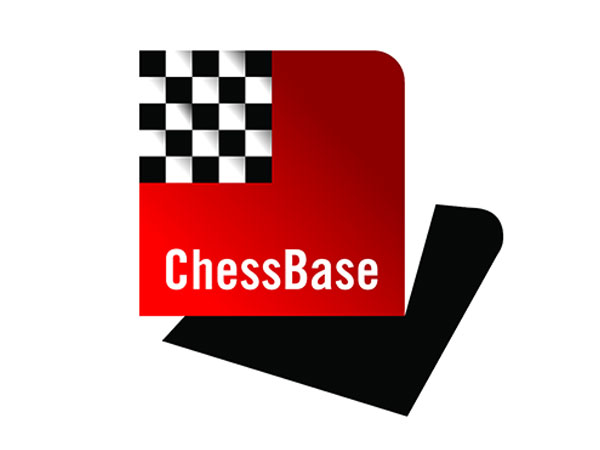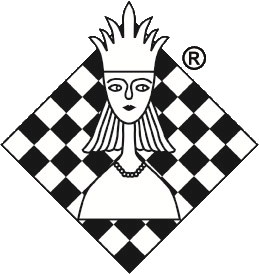
Pueden seguir aquí las partidas en directo de cada ronda en su navegador con Playchess.com... y también la prueba femenina...

El XXXI Campeonato de Europa de Clubes Absoluto y el XX CAmpeonato de Europa de Clubes Femenino se disputan desde el 18 de octubre en la capital de la Antigua República Yugoslava de Macedonia. Cincuenta equipos participan en la primera de las pruebas citadas, mientras que una docena compiten en la prueba femenina. Aunque los equipos están vinculados a lugares europeos, hay jugadores de América y Asia, con lo que se congregaron muchos de los meores del mundo.
Ambos campeonatos son suizos a siete rondas, con encuentros a 6 tableros en la competición absoluta y a 4 tableros en la femenina. El control de tiempo es de 90 minutos para 40 movimientos, más 30 minutos para terminar la partida, con un incremento de 30 segundo por movimiento, desde el primero. El primer premio del abierto es de 12.000 EUR, mientras que en el femenino suma 7.000 EUR.

El equipo SOCAR cuenta con Veselin Topalov, Fabiano Caruana, Anish Giri, Shakhriyar Mamedyarov,
Michael Adams, Teimour Radjabov, Rauf Mamedov y Eltaj Safarli. Elo medio: 2771
SOCAR ha ganado los tres encuentros disputados de foma convincente: 5.5-0.5 contra Tammer Shakki (Finlandia), 5-1 contra SV Werder Bremen (Alemania) y 4.5-0.5 contra la Universidad Belorechensk (Rusia). En puntos por encuentro llevan el marcador perfecto (6.0/6, pues son dos puntos por victoria de encuentro), pero en la segunda ronda su primer tablero Anish Giri perdió contra Vlastimil Babula en la complicada variante Noteboom con piezas negras.

[Event "31st ECC Open 2015"] [Site "Skopje MKD"] [Date "2015.10.19"] [Round "2.1"] [White "Babula, Vlastimil"] [Black "Giri, Anish"] [Result "1-0"] [ECO "D31"] [WhiteElo "2554"] [BlackElo "2798"] [Annotator "Sagar Shah"] [PlyCount "77"] [EventDate "2015.10.18"] [WhiteTeam "SV WERDER BREMEN (GER)"] [BlackTeam "SOCAR (AZE)"] {It is surprising that a solid player like Anish, who hardly ever loses, goes down to Babula who is rated nearly 250 points below him. But in chess even the best blunder, and when that happens nothing can be done!} 1. d4 e6 2. c4 d5 3. Nc3 Bb4 4. Nf3 dxc4 5. e3 b5 6. a4 c6 {By some weird move order we are now into one of the sharpest lines of chess called the Noteboom Variation.} 7. Bd2 a5 8. axb5 Bxc3 9. Bxc3 cxb5 10. b3 Bb7 11. bxc4 b4 12. Bb2 {[%csl Ga5,Gb4,Yc4, Yd4,Ye3] [#]This is all pretty well known theory. Black has those two extremely dangerous looking passed pawns on the queenside and White has the central pawns. I would say it is one of the most exciting and imbalanced opening positions in the game of chess.} Nf6 13. Bd3 O-O 14. O-O Nbd7 15. Nd2 Qc7 (15... e5 16. f4 (16. Bc2 Qc7 17. Ba4) 16... exd4 17. exd4 Re8 18. d5 Nc5 19. Bc2 $14 {leads to different kind of position.}) 16. f4 {Preventing Black from hitting the centre with e5. But this has left the g2 point quite soft and Black can advance his queenside majority which otherwise would not have been possible.} a4 $1 17. Rb1 (17. Rxa4 $2 Qc6 $19) 17... Qd6 18. Qe2 Rfd8 19. e4 Nc5 $1 {Anish is on the right track until now and navigating his way around with quite some precision.} 20. e5 Qc6 21. dxc5 Rxd3 (21... Ng4 22. Be4 Qxc5+ 23. Kh1 Rxd2 24. Qxd2 Bxe4 25. Bd4 Qxc4 26. Qxb4 $16 {is another complicated variation which ends in a better position for White.}) 22. exf6 Rad8 23. Nf3 Qxc5+ 24. Kh1 {Black is a piece down but has excellent compensation. White's centre is completely demolished and the a and b passers are still on the board. } b3 $2 {A bad move by Anish. It blocks his queenside pawns, and the extra piece makes itself felt.} (24... a3 25. Be5 b3 26. fxg7 Qe3 $11 {was the right way to continue when Black is not even worse.}) 25. Rbd1 $1 {I wonder what Anish missed here.} R3d6 26. Be5 Rxd1 27. Rxd1 Qa5 28. Nd4 {White's forces co-ordinate perfectly.} g6 29. h3 Qb6 30. Kh2 h6 31. c5 Qa6 (31... Qxc5 32. Nxe6 $18) 32. c6 $1 Qxe2 33. Nxe2 Rxd1 34. cxb7 Rd8 35. Nc3 $1 (35. b8=Q $2 Rxb8 36. Bxb8 b2 37. Nc3 a3 $19) 35... a3 36. Nb5 a2 37. Nd6 Rb8 38. h4 {The sad part of the story is that the black king cannot participate in this battle. } Kh7 39. g4 {The white king will slowly come over and clean up the pawns.} 1-0

Dado que Anish Giri pierde tan rara vez, todas sus derrotas son noticia [Fotografía de la Copa del Mundo 2015]
En la tercera ronda SOCAR se las vio con la Universidad Belorechensk, con Gelfand, Malakhov, Jobava, Rublevsky, Alekseev y Landa. Los jugadores del SOCAR Caruana, Adams y Radjabov se anotaron victorias mientras que los otros tres tableros entablaron, con lo que el amrcador quedó 4.5-1.5. Mención especial merece la técnica de finales de Adams contra Rublevsky.

[Event "31st ECC Open 2015"] [Site "Skopje MKD"] [Date "2015.10.20"] [Round "3.4"] [White "Rublevsky, Sergei"] [Black "Adams, Michael"] [Result "0-1"] [ECO "C24"] [WhiteElo "2702"] [BlackElo "2742"] [Annotator "Sagar Shah"] [PlyCount "104"] [EventDate "2015.10.18"] [WhiteTeam "UNIVERZITY-BELORECHENSK (RUS)"] [BlackTeam "SOCAR (AZE)"] 1. e4 e5 2. Bc4 Nf6 3. d3 Nc6 4. Nc3 Na5 5. Qf3 c6 6. Nge2 Be7 7. O-O O-O 8. h3 d5 9. exd5 b5 10. Bb3 b4 11. d6 Qxd6 12. Nd1 Bb7 13. Ne3 c5 14. Qg3 Qd7 15. Ba4 Qe6 16. b3 Nd5 17. Bb2 f6 18. Rae1 Bd6 19. Nxd5 Qxd5 20. f4 Bc6 21. fxe5 Bxe5 22. Nf4 Qd6 23. Bxe5 fxe5 24. Nh5 Rxf1+ 25. Rxf1 Qg6 26. Bxc6 Nxc6 27. Qxg6 hxg6 28. Ng3 {We catch this endgame from this point onwards. It's Black to play. The position looks completely in White's favour because of the pawn structure. Black has doubled isolated pawns on the kingside, an isolated guy on e5 and a weak pawn on c5. But White's position is not fireproof. The c2 pawn is a little weak, and with his next move Adam shows that he doesn't really need to move his rook in order to activate it.} a5 $1 29. Ne4 Nd4 30. Rf2 $1 {Rublevsky right decides that keeping control is important.} (30. Nxc5 Rc8 $132 {Gives Black enough counterplay.} (30... Nxc2 31. Rc1 (31. Rf2 Nd4) 31... Nd4 32. Re1 $14)) 30... a4 $1 {Right spirit. Whether it works or not, activity is the key.} (30... Rc8 31. Nd6 Rd8 32. Nc4 $14 {leads to a thankless position that would have to be constantly defended.}) 31. Nxc5 a3 $1 {Fixing the a2 pawn and getting a real asset in this position. But to attack the a2 pawn is not so easy, the black knight cannot reach c3 because the knight on e4 will all the time keep an eye on it.} 32. Nd7 $6 Re8 (32... Nb5 $1 33. Nxe5 Nc3 {As we mentioned previously, the white knight went away from e4 and the other knight made its way to c3.} 34. Nxg6 Nxa2 35. Ne7+ Kh7 36. Nc6 Ra6 37. Nd4 Nc3 38. Rf1 Rd6 $15 {Only Black can be better here in spite of being two pawns down.}) 33. Nb6 Rd8 {Stopping Nd5.} 34. Kf1 (34. Nc4 Rd5 35. g3 Nb5 36. Nd2 Nc3 37. Rf1 Nxa2 38. Ne4 $14 {The general idea of this variation is that the knight should remain in the centre and not like in the game where it was sidelined on a4.}) 34... Nb5 35. Na4 {[%cal Rb5c3] Knight to c3 had to be stopped. But in that bid the knight on a4 has becoming quite passive.} Rc8 ( 35... e4 36. dxe4 Rd1+ 37. Ke2 Ra1 38. Kd3 Rxa2 {would have been pretty nice but after} 39. Rf1 {[%csl Ra2] The rook on a2 is trapped.}) 36. Ke1 Nd4 37. Kd1 Rc6 {[%csl Ra4] As GM Jesse Kraai says, Tesuji against the knight on a4. The rook on c6 dominates it.} 38. h4 $2 {What could be more natural than to restrict the doubled g-pawns? But now Adams shows his class.} (38. Kc1 Kh7 39. g4 g5 40. Kd1 Kg6 41. Kc1 {It is true that all of White's pieces are passively posted but they are passive because black pieces are well placed. If the black pieces move then White ones can also wriggle out. So the position should most likely end in a draw.}) 38... g5 $1 {[#] This is the right way to activate the king.} 39. hxg5 Kh7 {Rublevsky is lost now because while all his pieces are tied down, the black king is free to roam and collect stuff.} 40. Kc1 Kg6 41. c3 {Of course something had to be done.} bxc3 42. b4 c2 43. Nc5 Rb6 44. Rf1 Rxb4 45. Nb3 Nxb3+ 46. axb3 Rxb3 47. Kxc2 Rb2+ 48. Kc3 Rxg2 {From being two pawns down, Black has cleaned up so many pawns that he is a pawn up.} 49. Re1 a2 50. Kb3 Kf5 51. Ka3 Rd2 52. Kb3 g6 {A beautiful performance by Mickey Adams who showed us the most important thing in the endgame is not material, but activity.} 0-1

Actividad a toda costa es el mensaje de Michael Adams a los jóvenes que esperan turno [Fotografía de la Copa del Mundo 2015]
SOCAR, lcapitaneados por Vladimir Tukmakov, son los defensores del título y parecen extremadamente fuertes y bien equilibrados. Tienen agitadores como Veselin Topalov y Shakhriyar Mamedyarov, jugadores universales como Fabiano Caruana y Teimour Radjabov, y supersólidos como Anish Giri y Michael Adams. Si algún equipo puede hacer que lo pasen mal es el Siberia (Rusia).

El equipo de Siberia está formado por Vladimir Kramnik, Levon Aronian, Alexander Grischuk, Li Chao,
Wang Yue, Anton Korobov, Dmitry Bocharov y Dmitry Kokarev. Elo medio: 2752.
Es el equipo ganador del Campeonato de Rusia por equipos 2015. Tienen en la actualidad 6 puntos por encuentro y la puntuación por tableros es de 14.0/18, tras optar por que Kramnik y Aronian descansasen las 2 primeras rondas. En la tercera Kramnik se estrenó contra Ian Nepomniachtichi. La técnica que mostró durante la partida merce ser vista una y otra vez.

[Event "31st ECC Open 2015"] [Site "Skopje MKD"] [Date "2015.10.20"] [Round "3.1"] [White "Kramnik, Vladimir"] [Black "Nepomniachtchi, Ian"] [Result "1-0"] [ECO "A49"] [WhiteElo "2777"] [BlackElo "2705"] [Annotator "Sagar Shah"] [PlyCount "97"] [EventDate "2015.10.18"] [WhiteTeam "SIBERIA (RUS)"] [BlackTeam "SHSM LEGACY SQUARE (RUS)"] 1. d4 Nf6 2. Nf3 g6 3. g3 Bg7 4. Bg2 d5 5. O-O O-O 6. c3 $5 {Kramnik plays as if he has the black pieces. But as we have seen recently, an opening advantage is not really something that he is looking for.} b6 7. c4 $5 {Losing a tempo – but so what?!!} c6 8. Ne5 Bb7 9. Nc3 Nbd7 10. Qa4 Nxe5 11. dxe5 Ne4 (11... Nd7 12. cxd5 cxd5 13. Nxd5 Nc5 (13... Nxe5 14. Rd1 $36) 14. Qc4 e6 $132) 12. Nxe4 dxe4 13. Bf4 e3 $5 14. Bxe3 Bxe5 15. Rad1 Qc7 16. c5 $1 {These are just the kind of positions one would dread to have against Kramnik. He is just so good at minute advantages. And by the way the move c5 is a very typical one against the b7 bishop. The game Karpov-Lautier comes to mind.} Bxb2 17. Qb3 Bf6 18. cxb6 axb6 19. Bxb6 Qc8 20. Rc1 {The c6 pawn is weak and the a2 pawn is not. This is good enough for Kramnik to continue grinding.} Qg4 {Nepomniachtchi's moves are filled with energy, but Kramnik's cool and calm response make them look pretty futile.} 21. Rc2 Ra6 22. Bf3 Qa4 23. Qxa4 Rxa4 24. Rd1 {Looking to infiltrate down the d-file.} Ba8 25. Bc5 $1 {c6-c5 will not be allowed!} (25. Rd7 c5 26. Bxc5 Bxf3 27. exf3 Rc8 {Is just the kind of situation that you don't want. You have an extra pawn but the opponent has managed to activate his pieces.}) 25... Rb8 26. a3 e5 27. e3 e4 28. Be2 Rb7 29. Rc4 $1 {Getting rid of the only active black piece.} Rxc4 30. Bxc4 {Look at the bishop on a8. The rest is just so so easy for the 14th World Champion.} Kg7 31. a4 Be7 32. Bxe7 Rxe7 33. a5 f5 (33... c5 {Now you can activate your bishop, but after} 34. Rd6 {it will still remain passive on a8 and the pawn on e4 is not doing any favours.}) 34. Rd8 Ra7 35. a6 Kf6 36. Re8 {The rook is tied down to the bishop on a8 and the bishop cannot move. The king has been cut off. All in all, it's now White kings time to get into the battle.} c5 37. Kf1 Kg7 38. Ke2 Bc6 39. Rc8 Bd7 40. Rg8+ (40. Rxc5 {is possible, but as you already know, White doesn't need to win pawns anymore. He just has to keep control.}) 40... Kh6 ( 40... Kf6 41. Rb8 {and Bc6 is not possible because of Rb6.}) 41. Rb8 Bc6 42. Rb6 Ba8 43. Bb5 Rc7 44. Kd2 Rc8 45. Kc3 Kg5 46. h3 $1 {No counterplay.} h5 47. Kc4 h4 48. Re6 hxg3 49. fxg3 {Next the rook comes to e8 and it's game over. A fantastic positional game by Kramnik. Wouldn't you agree?} 1-0

¡El control es la clave! Cuando Kramnik está en forma se tienen ejemplos de libro del juego posicional [Fotografía de la Copa del Mundo 2015]
Por otro lado, el actual campeón mundial de ajedrez relámpago Alexander Grischuk se defendió tenazmente para sacar lo mejor de Markus Ragger en la ronda 2. Esta partida nos muestra una hermosa idea ejecutada por Ragger.

[Event "31st ECC Open 2015"] [Site "Skopje MKD"] [Date "2015.10.19"] [Round "2.1"] [White "Ragger, Markus"] [Black "Grischuk, Alexander"] [Result "0-1"] [ECO "E98"] [WhiteElo "2698"] [BlackElo "2774"] [Annotator "Sagar Shah"] [SetUp "1"] [FEN "1r1q1bk1/3b2r1/1pRp3p/pN1Pp1n1/P3Pp1B/5N1P/1PQ3P1/5R1K w - - 0 32"] [PlyCount "56"] [EventDate "2015.10.18"] [WhiteTeam "SC MPA - MARIA SAAL (AUT)"] [BlackTeam "SIBERIA (RUS)"] {As you can guess the position has arisen from the King's Indian Mar Del Plata Variation. It is a complicated battle where White does not mind giving up his c6 rook for the bishop in order to get a strong passed pawn. But with his imaginative move, Markus Ragger just increases the stakes of the battle.} 32. Nxd6 $5 Bxc6 33. Nf5 Be8 34. Nxh6+ {White has currently two pawns for the rook, but his co-ordination is excellent.} Kh8 35. Nf5 Rc8 36. Qd3 {Once you look deeper you understand now that the g5 knight is badly pinned and the e5 pawn is about to fall. Things are looking pretty grim for Black.} Rg8 37. Nxe5 (37. d6 {with the threat of Nxg5 Rxg5 Bxg5 Qxg5 d7 is not so easy to meet.} Bxa4 38. Nxe5 $44 {with excellent compensation.}) 37... Qf6 38. Nf3 Bd7 39. Qd2 (39. Nxg5 Rxg5 40. Rxf4 Bxf5 41. Qf1 $1 (41. Rxf5 $2 Rc1+ 42. Kh2 Bd6+ 43. g3 Qxb2+ $19) 41... Kg8 42. Bxg5 Qxg5 43. Rxf5 {With four pawns for a piece and pretty good compensation.}) 39... Bxf5 40. Qxf4 Bh6 41. exf5 Rcd8 {Grischuk defends in the most tenacious fashion possible. The funny thing about this position is that White is a rook down and his pawns are not so threatening, yet the position is just around equal. This speaks something about the nature of White's compensation.} 42. Ne5 (42. Rd1 $1 $13 {Maintaining the tension is the best. Ne5-g6 is coming up.} Kh7 43. Ne5 Nxh3 44. gxh3 Bxf4 45. Bxf6 $11) 42... Rxd5 43. Ng4 Qd6 44. Qxd6 Rxd6 45. Bg3 Rc6 46. Be5+ Kh7 47. Nf6+ Rxf6 48. Bxf6 {Ragger wins back some material. Now he has three pawns for a piece, but his dynamism is lost and now Grischuk has very little difficulty in converting this position.} Ne4 49. Be5 Bg7 50. f6 Re8 $1 51. fxg7 (51. Bd4 Ng3+ $19) 51... Rxe5 52. Rf3 Nc5 53. Rf6 Re6 54. Rf4 Re4 55. Rf6 Re6 56. Rf4 Kxg7 57. Rg4+ Kf7 58. Rf4+ Ke7 59. Kh2 Re4 {A wonderful game. Beautiful imaginative play by Ragger. It was a pity that he wasn't rewarded for it. But one has to agree that Grischuk defended in the most tenacious fashion.} 0-1
Esta imaginativa forma de jugar de Markus Ragger nos recuerda un sacrificio de torre similar realizado por cierto antiguo campeón mundial:
Boris Spassky – Ratmir Kholmov (1957)

Juegan blancas. ¿Cómo descorchó Spassky su brillantez?

[Event "URS-ch24"] [Site "Moscow"] [Date "1957.??.??"] [Round "6"] [White "Spassky, Boris V"] [Black "Kholmov, Ratmir D"] [Result "1/2-1/2"] [ECO "E31"] [Annotator "Sagar Shah"] [SetUp "1"] [FEN "1r2r1k1/pp1bqp2/3p1nn1/2pP2p1/2P1p1P1/2P1P1B1/P1QNBP2/2K3RR w - - 0 20"] [PlyCount "44"] [EventDate "1957.01.24"] [EventType "tourn"] [EventRounds "21"] [EventCountry "URS"] [Source "ChessBase"] [SourceDate "1999.07.01"] {[%cal Gh1h5,Rf6h5] Here Spassky started his brilliant idea with an exchange sacrifice.} 20. Rh5 $1 Nxh5 21. gxh5 Nf8 22. Nxe4 $1 Qxe4 23. Qxe4 Rxe4 24. Bxd6 Rbe8 25. Rxg5+ Kh8 26. Bxc5 {White has won four pawns for a rook. But the important thing is not to let the opponent get co-ordinated.} f6 27. Rg3 b6 28. Bd4 Nh7 29. Kd2 Rg8 30. Rg6 Be8 31. Bd3 Bxg6 32. hxg6 Rxd4 33. cxd4 Nf8 {Well, what can we say, apart from just admiring the play of the tenth World Champion? He has seen that his four pawns will really make it difficult for Black's rook to play in the game.} 34. c5 bxc5 35. dxc5 Nd7 36. c6 Nb6 37. e4 Kg7 38. Ba6 Kxg6 39. a4 Kf7 40. a5 Na8 41. Bc4 Rd8 {There is no real way to make progress and hence a draw was agreed.} 1/2-1/2

Boris Spassky y Markus Ragger están de acuerdo en que los peones y una mejor coordinación a veces son más importantes que las torres
Además de los dos fuertes equipos mencionados, los locales del Alkaloid tienen grandes nombres como Vassily Ivanchuk, Evgeny Tomashevsky, Dmitry Jakovenko, Dmitry Andreikin, Yuriy Kryvoruchko y Yu Yangyi. El genio de Ivanchuk fue demasiado para Jon Ludvig Hammer en la segunda ronda.
Vassily Ivanchuk – Jon Ludvig Hammer (Ronda 2)

Juegan blancas. ¿Qué movería usted?
Para los jugadores normales, el movimiento más natural sería 9.d3, pero Ivanchuk jugó el ultrasofisticado 9.Ta2! Y no me creerá si le digo que la torre entra en la partida en un momento crucial.

[Event "31st ECC Open 2015"] [Site "Skopje MKD"] [Date "2015.10.19"] [Round "2.1"] [White "Ivanchuk, Vassily"] [Black "Hammer, Jon Ludvig"] [Result "1-0"] [ECO "A09"] [WhiteElo "2726"] [BlackElo "2680"] [Annotator "Sagar Shah"] [PlyCount "65"] [EventDate "2015.10.18"] [WhiteTeam "ALKALOID (MKD)"] [BlackTeam "OSLO SCHAKSELSKAP (NOR)"] 1. Nf3 d5 2. c4 d4 3. b4 c5 4. g3 a5 5. b5 g6 6. Bg2 Bg7 7. O-O Ra7 8. a4 b6 { [#]} 9. Ra2 $1 e5 10. d3 Be6 (10... Ne7 {followed by 0-0 was better.}) 11. Ng5 Bc8 12. e4 (12. f4 $5 h6 13. Nf3) 12... f6 13. Nh3 h5 $6 {Overambitious play by Hammer, especially when his king is still in the center.} (13... Nh6 14. f4 O-O $11) 14. f4 Bg4 15. Qe1 Qc8 16. Nf2 Bd7 17. Nd2 h4 18. gxh4 Nh6 19. Nf3 exf4 20. Bxf4 O-O {White already has a clear cut advantage. Now Ivanchuk pens up the position with} 21. e5 $1 fxe5 22. Bxe5 Bf5 23. Re2 $1 {And there we have it. The rook that was played to a2 on the ninth move joins the battle at the most appropriate moment – after 14 moves!} Bxe5 24. Nxe5 Rg7 25. Qd2 Rh7 26. Ne4 Nd7 27. Ng5 Re7 28. Ng4 $1 {This is a simple discovered attack.} Bxg4 29. Rxe7 Rxf1+ 30. Bxf1 {White is up an exchange and clearly winning.} Nf5 31. Qf4 Nxe7 32. Qf7+ Kh8 33. Qh7# {Jon Ludvig Hammer allows his opponent to mate him, maybe giving him the respect for this beautifully played game.} 1-0

Un equipo con Vassily en el primer tablero seguro que tiene una fuerza considerable [Fotografía del mundial relámpago]
El equipo italiano Obiettivo Risarcimento Padova es también muy fuerte, con ajedrecistas como Peter Leko, Sergey Karjakin, Hikaru Nakamura y Maxime Vachier-Lagrave. No obstante en la segunda ronda el número dos del mundo Hikaru Nakamura patinó y encajó una sorprendente derrota contra Yannick Pelletier. Sorprendente no porque Pelletier sea incapaz de superar a Nakamura (Por supuesto que puede, pues ha sido un jugador excelente en el pasado), sino porque Nakamura fue superado completamente en su apertura favorita, la defensa India de Rey. Objetivamente puede que la idea de Pelletier no sea tan fuerte, pero delante del tablero el norteamericano no pudo resolver los problemas planteados.

[Event "31st ECC Open 2015"] [Site "Skopje MKD"] [Date "2015.10.19"] [Round "2.3"] [White "Pelletier, Yannick"] [Black "Nakamura, Hikaru"] [Result "1-0"] [ECO "E97"] [WhiteElo "2557"] [BlackElo "2816"] [Annotator "Sagar Shah"] [PlyCount "75"] [EventDate "2015.10.18"] [WhiteTeam "SCHACHGESELLSCHAFT ZURICH (SUI)"] [BlackTeam "OBIETTIVO RISARCIMENTO PADOVA (ITA)"] 1. d4 Nf6 2. c4 g6 3. Nc3 Bg7 4. e4 d6 5. Nf3 O-O 6. Be2 e5 7. O-O Nc6 8. d5 Ne7 9. b4 a5 10. Ba3 b6 11. bxa5 Nh5 12. Nd2 Nf4 {[#] In this position, which has been seen in already eleven games before, Pelletier comes up with an interesting novelty.} 13. axb6 $5 {Sacrificing a piece in order to open up lines on the queenside and win some pawns.} Rxa3 14. Nb5 Ra5 (14... Ra8 {could be an improvement so that later Nb3 doesn't win a tempo.} 15. Nxc7 (15. bxc7 Qd7 16. a4 Ba6 17. Nb3 {Here there is no rook on a5, and hence Black is better. } Bxb5 18. cxb5 Qxc7 $17) 15... Rb8 16. c5 dxc5 17. Nc4 Rxb6 18. Nxb6 Qxc7 19. Rb1 Rd8 {The position remains complex but Black is definitely not worse.}) 15. bxc7 Qd7 16. a4 {Somehow it is much easier to play as White. He has to just go Nb3 and keep pushing his pawns.} Ba6 17. Nb3 Bxb5 18. cxb5 Qxc7 (18... Raa8 19. b6 $18 {and with a5 coming up, it would have been a complete massacre!}) 19. Nxa5 Qxa5 20. g3 Nxe2+ 21. Qxe2 {Although Black has two pieces for the rook I already like White's position as his two queenside pawns combined with open c-file for the rook should be good enough for a clear advantage.} Bh6 { controlling the crucial c1 square.} 22. Rfb1 Rb8 23. b6 $1 {Pelletier knows that he only has to queen one of the pawns!} Rxb6 24. Rxb6 Qxb6 25. a5 Qc5 26. Ra4 (26. a6 Nc8 27. Qa2 Na7 28. Rb1 $18) 26... Kg7 27. a6 Nc8 28. Rc4 Qb5 29. Qa2 $1 Nb6 (29... Na7 30. Rc7 Qb6 31. Rb7 Qd4 32. Qa3 $18) 30. Rc6 Na4 31. a7 Qa5 32. Kg2 Qxa7 33. Rc4 Bg5 34. Qxa4 {The piece is lost and the rest is a matter of straight forward technique.} Qb7 35. Rb4 Qc7 36. Qc6 Qa7 37. Qxd6 Be7 38. Qxe5+ {We have to agree that this was an excellently played game by Yannick Pelletier.} 1-0

Yannick Pelletier aceptó una apuesta y le funcionó contra el mejor [Fotografía de Biel 2008]
Otro equipo de Rusia, el Mednyi Vsadnik, son los cuartos en la lista de favoritos y alinean a Peter Svidler, Lenier Dominguez, Nikita Vitiugov, Maxim Matlakov, Maxim Rodstein, Vladimir Fedoseev, Ildar Khairullin e Ivan Saric. También han ganado todos sus encuentros. Uno fue especialmente impresionante: la victoria de Svidler en la tercera ronda sobre Rasmus Svane. A partir de una apertura en la que no tenía nada, superó a su rival alemán de 18 años con estilo excelente.

[Event "31st ECC Open 2015"] [Site "Skopje MKD"] [Date "2015.10.20"] [Round "3.1"] [White "Svane, Rasmus"] [Black "Svidler, Peter"] [Result "0-1"] [ECO "A35"] [WhiteElo "2543"] [BlackElo "2727"] [PlyCount "120"] [EventDate "2015.10.18"] [WhiteTeam "HAMBURGER SCHACHKLUB VON 1830 E.V. (GER"] [BlackTeam "MEDNYI VSADNIK (RUS)"] {Often we have a question in our minds - What exactly differentiates a strong 2550 GM from a super strong 2750 GM. This game should answer that question.} 1. Nf3 c5 2. c4 Nf6 3. Nc3 Nc6 4. g3 d5 5. d4 e6 6. cxd5 Nxd5 7. Bg2 cxd4 8. Nxd4 Nxc3 9. bxc3 Nxd4 10. Qxd4 Qxd4 11. cxd4 Bd6 {Now this is a very safe variation for White and one in which he hardly loses. So let's have a look at how Svidler outplays his opponent.} (11... Bb4+ {is the other option.}) 12. O-O Rb8 13. e4 (13. Bf4 Ke7 14. Rfc1 Bd7 15. Bxd6+ Kxd6 16. e4 $14) 13... b6 14. Bb2 f6 15. Rac1 Bb7 16. f4 {White has played the opening in fine fashion and he has a small edge.} Kd7 17. e5 Be7 18. Rfd1 $6 (18. Bxb7 Rxb7 19. Rfd1 { would be more accurate as the black rooks are not connected currently and White can get in d5.} Rc7 20. Rxc7+ Kxc7 21. d5 exd5 22. exf6 gxf6 23. Rxd5 { is similar to the game, just that the rook is more active.}) 18... Bxg2 19. Kxg2 Rhc8 20. d5 Rxc1 21. dxe6+ Kxe6 22. Rxc1 Bc5 23. exf6 (23. Rd1 Rc8 $11) 23... gxf6 24. Re1+ (24. Rd1 {Not allowing black rook to get activated could have been better.}) 24... Kf7 25. Kf3 Rd8 26. Re2 a5 27. Ke4 (27. a4 $11) 27... a4 28. Kf5 Rd5+ 29. Ke4 Rd7 30. Bc3 $6 (30. g4 {not allowing f5 later on.}) 30... Re7+ 31. Kd3 Rxe2 32. Kxe2 f5 33. Kd3 b5 {Now, all the entry points have been covered for white king and the black monarch is looking to settle down on d5.} 34. Bd4 Be7 35. Be5 Ke6 36. Kd4 h5 37. Bh8 Ba3 38. Be5 Bf8 (38... h4 $5 39. gxh4 $4 Bb2+ 40. Kc5 Bxe5 41. fxe5 Kxe5 $19) 39. Bh8 Be7 40. Bg7 Ba3 41. Be5 Bb4 42. Bg7 Bd6 43. Bh8 h4 44. gxh4 (44. Be5 Bxe5+ 45. fxe5 b4 46. Kc4 hxg3 47. hxg3 b3 $1 48. axb3 axb3 49. Kxb3 Kxe5 50. Kc4 Ke4 $19) 44... Bxf4 45. h5 Bd6 46. h6 Kf7 47. Kd5 Bf8 48. Kc6 b4 49. Kb5 a3 50. Kc4 Kg6 51. Bg7 Be7 52. h4 f4 53. h5+ Kh7 54. Kd3 Bg5 55. Kc4 Bxh6 56. Bd4 Bf8 57. Be5 f3 58. Bd4 Kh6 59. Kd3 Kxh5 60. Ke4 Bg7 {All of White's mistakes were quite imperceptible. It was as if one would not know the reason why Black lost. But on closer inspection you could see that Svidler played with a plan, thanks to his better understanding, while Svane did not.} 0-1

Peter Svidler: el finalista de la Copa del Mundo es un clásico [Fotografía de la Copa del Mundo 2015]
Mención especial merecen los campeones de 2013, los checos del Ave Navy Bor. Tienen fuertes jugadores procedentes de Polonia (Wojtaszek y Bartel), Indian (Harikrishna y Sasikiran) y Chequia (Navara, Laznicka y Hracek) Ellos también están con 6.0/6.
Primeros puestos de la competición absoluta tras la ronda 3
|
Nº
|
Fav
|
Equipo |
+
|
=
|
-
|
Des1
|
Des2
|
Des3
|
|
1
|
1
|
SOCAR (AZE) |
3
|
0
|
0
|
6
|
42,0
|
15,0
|
|
2
|
6
|
AVE NOVY BOR (CZE) |
3
|
0
|
0
|
6
|
42,0
|
15,0
|
|
3
|
3
|
ALKALOID (MKD) |
3
|
0
|
0
|
6
|
36,0
|
14,5
|
|
4
|
5
|
MEDNYI VSADNIK (RUS) |
3
|
0
|
0
|
6
|
36,0
|
14,5
|
|
5
|
2
|
SIBERIA (RUS) |
3
|
0
|
0
|
6
|
36,0
|
14,0
|
|
6
|
4
|
OBIETTIVO RISARCIMENTO PADOVA (ITA) |
3
|
0
|
0
|
6
|
34,0
|
12,5
|
|
7
|
9
|
ODLAR YURDU (AZE) |
2
|
0
|
1
|
4
|
39,0
|
12,5
|
|
8
|
8
|
SHSM LEGACY SQUARE (RUS) |
2
|
0
|
1
|
4
|
34,0
|
13,0
|
|
9
|
7
|
UNIVERZITY-BELORECHENSK (RUS) |
2
|
0
|
1
|
4
|
29,0
|
12,5
|
|
10
|
11
|
SCHACHGESELLSCHAFT ZURICH (SUI) |
2
|
0
|
1
|
4
|
24,0
|
10,0
|
|
11
|
14
|
LSG LEIDEN (NED) |
2
|
0
|
1
|
4
|
23,0
|
12,5
|
|
12
|
13
|
WORLDTRADINGLAB CLUB 64 MODENA (ITA) |
2
|
0
|
1
|
4
|
21,0
|
9,0
|
|
13
|
10
|
BEER-SHEVA (ISR) |
2
|
0
|
1
|
4
|
18,0
|
11,5
|
|
14
|
24
|
RISHON LEZION (ISR) |
2
|
0
|
1
|
4
|
18,0
|
10,5
|
|
15
|
20
|
GAMBIT ASSEKO SEE (MKD) |
2
|
0
|
1
|
4
|
17,0
|
10,0
|
|
16
|
21
|
KSK 47 EYNATTEN (BEL) |
2
|
0
|
1
|
4
|
16,0
|
11,0
|
|
17
|
26
|
TAMMER-SHAKKI (FIN) |
2
|
0
|
1
|
4
|
14,0
|
12,0
|
|
18
|
12
|
OSLO SCHAKSELSKAP (NOR) |
2
|
0
|
1
|
4
|
14,0
|
10,5
|
|
19
|
25
|
SV WERDER BREMEN (GER) |
2
|
0
|
1
|
4
|
13,0
|
10,5
|
|
20
|
19
|
SC MPA - MARIA SAAL (AUT) |
2
|
0
|
1
|
4
|
13,0
|
10,0
|
|
21
|
17
|
HAMBURGER SCHACHKLUB 1830 (GER) |
2
|
0
|
1
|
4
|
13,0
|
9,5
|
|
22
|
15
|
VAALERENGA (NOR) |
2
|
0
|
1
|
4
|
10,0
|
10,0
|
|
23
|
23
|
GENEVA CHESS CLUB (SUI) |
2
|
0
|
1
|
4
|
10,0
|
9,0
|
Resultados completos de los 50 equipos...
A medida que avanza la prueba los enfrentamientos directos en la cima prometen mucha emoción.
Competición femenina
La sección femenina tiene 12 equipos. Un suizo a 7 rondas entre 12 equipos casi es una liga. Eso significa que los mejores equipos pronto se ven las caras entre ellos. Al cabo de tres rondas ya tenemos un líder en solitario, el equipo georgiano Nona.

El equipo Nona cuenta con cinco fuertes jugadoras georgianas (en el sentido de las agujas del reloj, desde la parte superior izquierda):
Nana Dzagnidze, Bela Khotenashivili, Lela Javakhishvili, Nino Batsiashvili y Miranda Mikadze
Llegada desde el torneo de Mónaco del Grand Prix Femenino de la FIDE, Nana Dzagnidze está en excelente forma y lleva 2.5/3 derrotando a fuertes jugadoras como Monika Socko y Valentina Gunina. En la segunda ronda sacaron lo mejor del SHSM Legacy Square, con Girya Gunina, Alexandra Kosteniuk, Olga Girya, Ekaterina Kovalevskaya y Alina Kashlinskaya. En la tercera ronda fueron capaces de vencer a otro fuerte combinado, el Gambit Asseko See (Macedonia), en cuyas filas juegan Antanoeta Stefanova, Aleksandra Goryachkina, Shen Yang, Dinara Saduakassova y Madina Davletbayeva.
En la cuarta ronda se encontrarán con el Ugra, que tiene un punto menos y en cuya escuadra forman Anna Ushenina, Natalija Pogonina, Lilit Mkrtchian, Marina Guseva y Baira Kovanova. El ganador del choque se convertirá probablemente en campeón.
Clasificación tras la ronda 3
|
Nº
|
Fav
|
Equipo |
+
|
=
|
-
|
Des1
|
Des2
|
Des3
|
|
1
|
1
|
NONA (GEO) |
3
|
0
|
0
|
6
|
19,5
|
9,0
|
|
2
|
4
|
UGRA (RUS) |
2
|
1
|
0
|
5
|
18,0
|
8,5
|
|
3
|
3
|
GAMBIT ASSEKO SEE (MKD) |
2
|
0
|
1
|
4
|
22,0
|
9,0
|
|
4
|
6
|
DE STUKKENJAGERS (NED) |
2
|
0
|
1
|
4
|
12,0
|
7,5
|
|
5
|
5
|
SPB (RUS) |
2
|
0
|
1
|
4
|
8,0
|
6,5
|
|
6
|
2
|
SHSM LEGACY SQUARE (RUS) |
1
|
1
|
1
|
3
|
19,0
|
7,0
|
|
7
|
10
|
RISHON LEZION (ISR) |
1
|
0
|
2
|
2
|
9,5
|
5,0
|
|
8
|
7
|
ASD CIRCOLO SCACCHI R.FISCHER (ITA) |
1
|
0
|
2
|
2
|
9,0
|
5,0
|
|
9
|
11
|
OSLO SCHAKSELSKAP (NOR) |
1
|
0
|
2
|
2
|
5,0
|
3,0
|
|
10
|
8
|
BOSSA NOVA (BLR) |
1
|
0
|
2
|
2
|
3,5
|
4,0
|
|
11
|
9
|
MIDLAND MONARCHS (ENG) |
1
|
0
|
2
|
2
|
3,0
|
4,0
|
|
12
|
12
|
HERZLIYA CHESS CLUB (ISR) |
0
|
0
|
3
|
0
|
7,0
|
3,5
|

El torneo se juega en el hotel de cinco estrellas Aleksandar Palace

¡Skopie es antigua! La zona está habitada desde al menos el 4000 adC
Enlaces
























